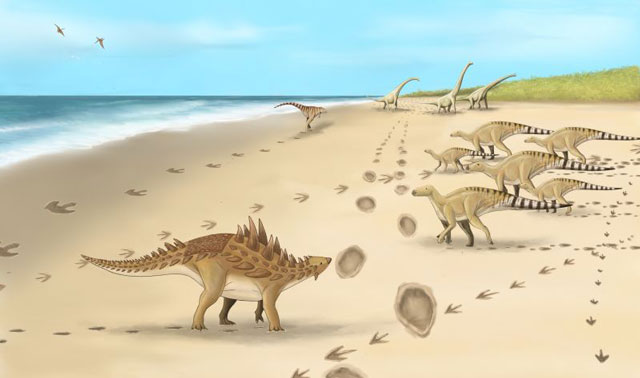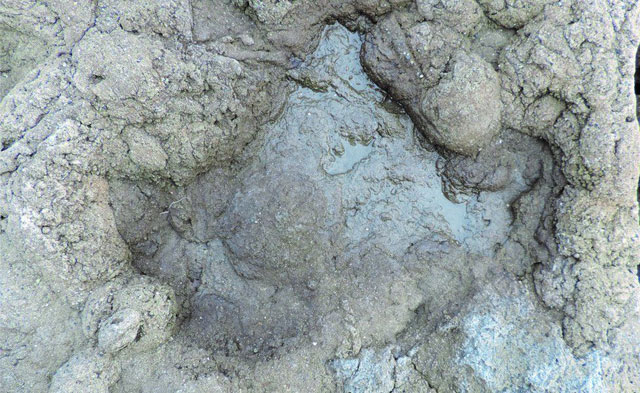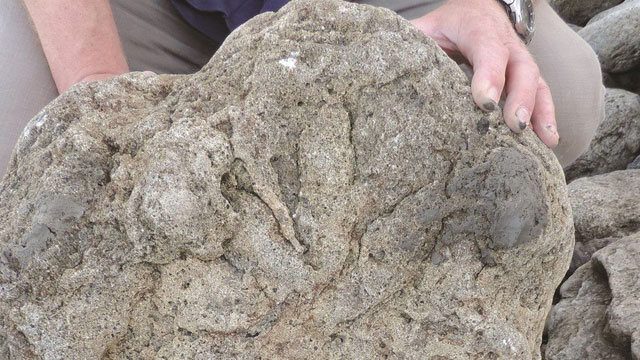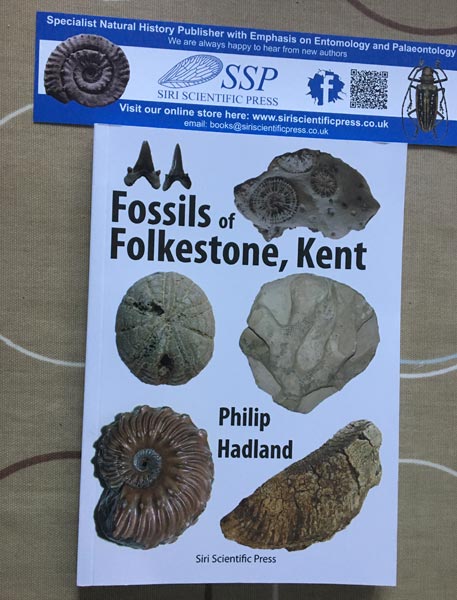Researchers Find The Last Record of Dinosaurs in Britain
Researchers writing in the Proceedings of the Geologists’ Association have reported tracks from at least six different species of dinosaur found in Lower Cretaceous rocks at Folkestone in Kent. The tracks and trackways from the Lower Greensand Group date to around 112-110 million years ago (Albian faunal stage of the Cretaceous). As such, these rare trace fossils represent evidence of the last known dinosaurs to walk on the UK landmass.

Evidence of Dinosaurs in Britain
The footprints were discovered in the cliffs and on the foreshore in Folkestone, Kent (southern England). Storms affect the cliffs and wash away sediments occasionally exposing fossils and in very rare cases, evidence of dinosaurs. Isolated vertebrae thought to represent an armoured dinosaur had been found previously and there have been reports of dinosaur tracks being discovered, but the paper published in the Proceedings of the Geologists’ Association is the first, formal, scientific assessment of these remarkable trace fossils.
A Challenge to Find a Dinosaur Footprint
Philip Hadland, a curator at the Hastings Museum and Art Gallery, an expert on the fossils of Folkestone, found a dinosaur track, believed to represent an ornithopod on the 13th September 2017. After showing his find to Steve Friedrich, a local fossil hunter with decades of experience, Steve thought that he too might try his luck to see if he could spot one. Remarkably, within ten minutes Steve found a beautiful, three-toed print, most likely representing a theropod.

Professor of Palaeobiology at the University of Portsmouth and co-author of the scientific paper, David Martill, commented:
“It is quite an extraordinary discovery because these dinosaurs would have been the last to roam in this country before becoming extinct.”

Many of these remarkable specimens are on display at the Folkestone Museum.
These trace fossils have forced palaeontologists to rethink the Early Cretaceous depositional environment of this part of the Kent coast. Dinosaur footprints, together with fossil wood and oysters in a matrix of well-rounded quartz grains indicates a coastal depositional environment of an extremely shallow depth, perhaps with short periods of exposure as dry land.
Everything Dinosaur Comments
A spokesperson from Everything Dinosaur commented that an exposed beach may have provided an easier route for dinosaurs to use to travel from one food source to another. It was probably more convenient for these large animals to navigate a sandy beach than to try moving through dense undergrowth that would have been found further inland. Some of the dinosaurs could have been beachcombing, it is possible that the theropods may have visited the beach looking for any corpses that may have been washed up by the tide.
One of the authors of the scientific paper, Philip Hadland, has produced a really helpful guide to fossil hunting in the Folkestone area. Entitled “Fossils of Folkestone, Kent” it is available from Siri Scientific Press here: Siri Scientific Press.

Picture credit: Everything Dinosaur
To read Everything Dinosaur’s review of “Fossils of Folkestone, Kent”: Everything Dinosaur reviews “Fossils of Folkestone, Kent”.
The scientific paper: “The youngest dinosaur footprints from England and their palaeoenvironmental implications” by Philip T. Hadland, Steve Friedrich, Abdelouahed Lagnaoui and David M. Martill published in the Proceedings of the Geologists’ Association.
Visit the Everything Dinosaur website: Dinosaur Toys and Models.

